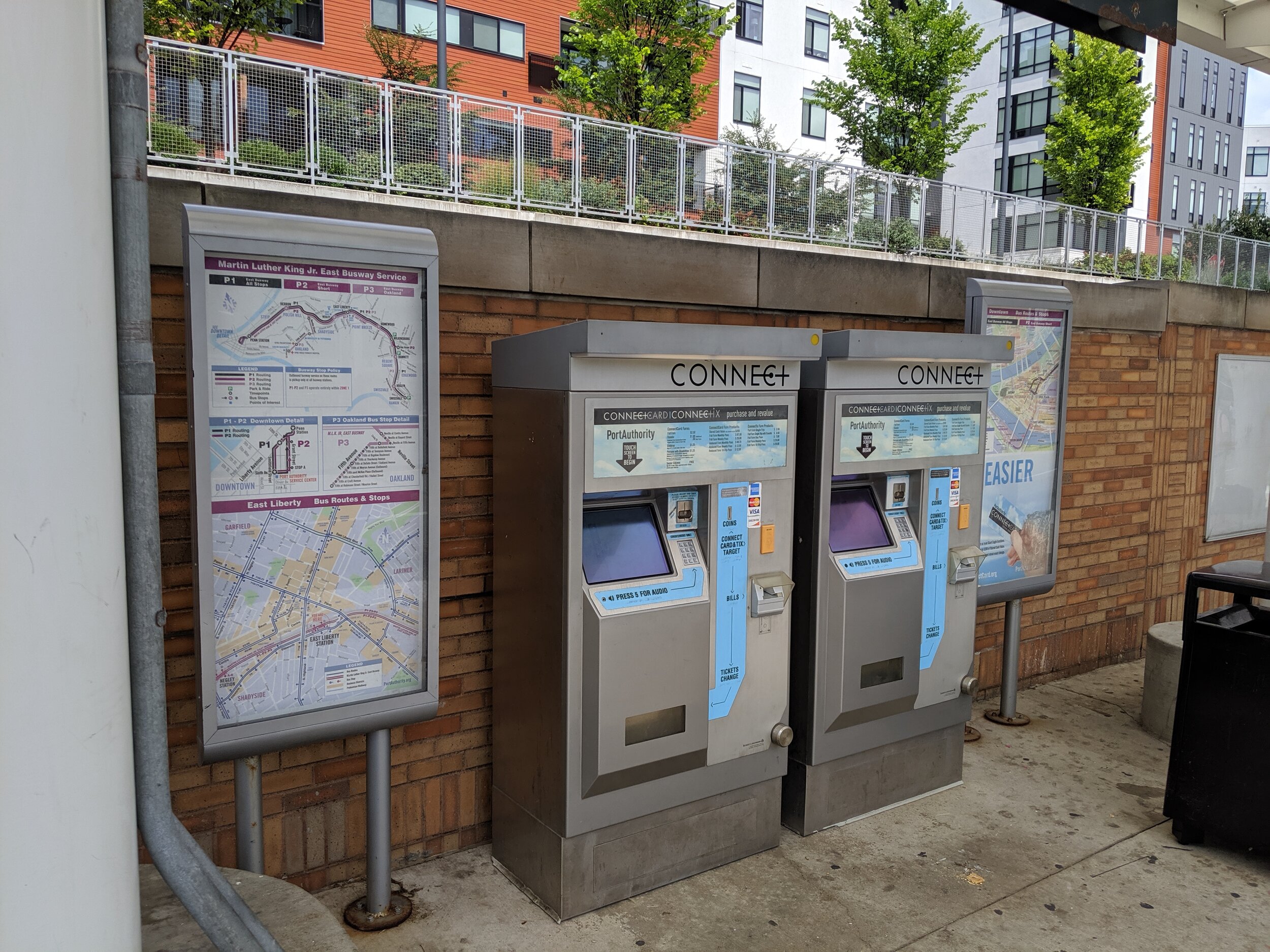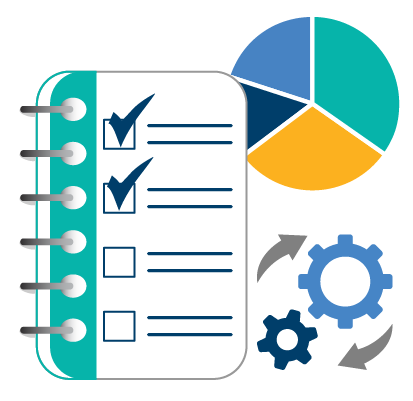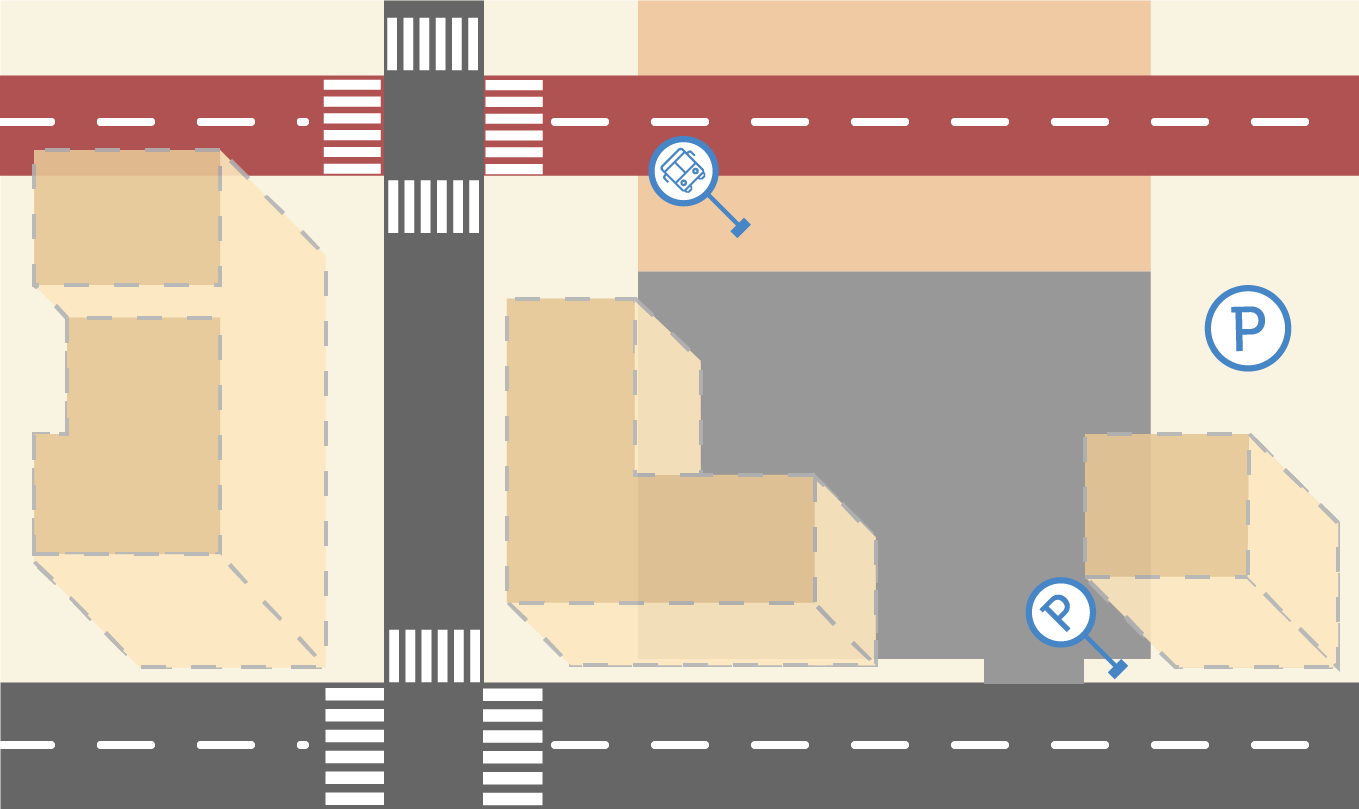
Introducing the Policies & Programs of NEXTransit
Your Top 5 Priorities:
Sidewalk Quality and Access Program
Walking is the primary way most people access transit. Unfortunately, not all streets leading to transit stops/stations have sidewalks. The issue of missing sidewalks is prevalent in suburban areas, but is not exclusive to them--denser urban areas also lack sidewalks in many locations.
PRT should partner with local agencies such as Allegheny County, SPC, and municipalities to form a sidewalk construction program that prioritizes building complete walkshed networks to transit in areas of high transit propensity and equity-based mobility need. While the structure of such a program is still to be determined, it is important to realize economies of scale in order to maximize the mileage of sidewalk that can be constructed per year. Compare to PennDOT's rapid bridge replacement program--engineering /construction management & inspection costs should be bundled and standardized for maximum impact.
Affordable Fares
PRT should evaluate the implementation of fare capping and/or a preferential fare program for low-income riders, either as part of the current fare study or as a follow-up task. Such a program would be warranted based on the demographics of the existing ridership base. Also, evaluate the implementation of free transfers to facilitate more seamless and affordable transfers. Such a policy would be especially warranted upon completion of a network redesign that utilizes transit hubs--increased network access may depend on making connections. Connections/transfers are moderately price elastic, and adoption of a time-based fare with unlimited free transfers may encourage more trips in the aggregate.
ADA System Access
PRT's goal is 100% system accessibility to all stations, shelters, and hubs under the Americans with Disabilities Act. This policy/program would evaluate and program upgrades (and potentially downgrades where ADA compliance is not achievable) to move towards full system accessibility regardless of ability.
Bus Network Redesign
PRT will conduct a full analysis and redesign of the bus network that would align transit routes and resources with a focus on the values in NEXTransit. This could include more specific network goals such as a 24-hour network, and would include a thorough public process to account for community priorities that weigh the value of network coverage vs. frequency.
Systemwide Signage / Wayfinding
As the first and most common interaction riders have with the transit system, clear and consistent signage is important for network legibility. This program would ensure a broad system is developed that incorporates branding, ease of understanding, and simplicity throughout the service area
But wait… there’s more!
All the Policies and Programs were well-received and will be part of the NEXTransit Plan. Some are even already underway: PRT is moving full-steam ahead on expansion and implementation where possible. Here is what’s being proposed:
Affordable Housing
As PRT's TOC program evolves, follow existing program guidelines and ensure that future developments are prioritized for impact on affordable housing in joint development efforts. Such developments would ideally minimize parking for on-site uses and adequately price park and ride spaces (if they are included at all).
Electric Offsets
The region experiences high levels of air pollution, and PRT should try to reduce its carbon footprint as much as possible. Where possible, utilize PRT-owned property/facilities to generate renewable energy, and to the greatest extent possible, purchase clean energy credits to offset agency-wide electricity usage.
The region experiences significant problems with stormwater runoff due to combined sewers, excess impervious surfaces, and challenging topography. PRT should strive to minimize or eliminate excess stormwater runoff from its properties using industry best practices, and where onsite capture/storage is not possible/feasible, offset excess runoff via BMPs within the same sewershed where the runoff occurs.
Expand existing customer information program
In addition to proper signage and information, customer service personnel is key to assisting riders with their questions about using the transit system. Expand efforts that focus on education, particularly for non-riders/occasional riders, tourists, and employers.
Transit Signal Priority
In order to facilitate systemwide transit-supportive street upgrades, pursue a multi-agency strategy for standardizing and implementing a traffic signal priority system that allows for emergency services and transit vehicles to have interoperable equipment.
Pilot Projects (Tactical Urbanism)
Many projects are difficult for the public to understand and visualize using traditional methods, so tactical urbanism is an approach that constructs some types of projects using low cost and/or temporary materials in order to demonstrate how an improvement will function in the real world. For example, PRT may wish to demonstrate the impact of bus boarding islands and/or bus bulbs--it can do this by purchasing rubber platform pieces and assembling them on-site for temporary deployment. Upon completion of the demo, the pieces can be moved to another site.
Bottleneck Bypass Lanes
Areas of localized congestion may be good candidates for short sections of bus lanes and/or queue jump lanes that could help transit bypass bottlenecks. This tactic could be best utilized in high ridership areas that have limited right of way for longer and/or more intense transit-exclusive infrastructure.
Even more programs to share!
New Maintenance Garage
Current facilities do not allow for further expansion of the bus transit fleet. Adding service frequency to the existing network would not be possible without garage capacity expansion for bus, garage capacity expansion for the non-revenue vehicle fleet, or capacity expansion for light rail maintenance equipment and laydown area..
Vehicle electrification / fuel diversification
A diverse vehicle fleet may use alternative fuel sources such as electricity, fuel cells, or natural gas as technologies advance and become more affordable. These technologies have the benefits of reducing localized air pollution, reducing greenhouse gas emissions, and can help make communities along transit routes more livable via reduced noise and vibration.
Mobility Technology Innovation
Technology advancements in mobility are developing quickly and PRT could develop policies that address long-term operational and safety goals as new technologies are introduced. This could include advancements in vehicle electrification, charging, signal prioritization, docking, platooning, communication, and other computerization methods of the future.
Vehicle Design and Amenities
On-board amenities and vehicle layouts make transit more accessible, comfortable, or convenient while still maintaining rider safety, capacity and ease of movement within the vehicle. Additions could include spaces for strollers and carts, more storage space, or better accommodations for wheelchairs.
Fare Purchase Expansion
This program, which is already underway, would include PRT continuing to expand retail locations and adding ticket vending machines in a targeted manner throughout the system to improve the experience for all riders, with a special focus on for un- and under-banked customers who must currently use cash to ride.
Parking Management Program
Parking is an inefficient and costly use of land, even when used for park and ride facilities. Short term, parking facilities should be priced based on what the market will bear, and long term the facilities should be integrated into joint development sites that produce revenue and additional ridership.
Stop Optimization and Amenity Placement
This program encourages the continuation of PRT’s efforts to consolidate bus stops on a route-by-route basis to achieve optimal spacing, add bus shelters and other amenities, and improve operational efficiency.
Study the best use of underutilized /non-utilized infrastructure and property
This policy would direct PRT to study infrastructure and property that is owned by the agency but does not play a role in advancing the agency's mission of connecting people to life for highest/best use. Infrastructure would be divested, closed, or used differently/more efficiently where possible. This includes buildings, land, bridges, and other assets throughout the County.
Interested in more detail?
These short reports contain additional information and case study background about some of the recommendations of NEXTransit.

How are these different from projects?
For the purposes of this phase of the NEXTransit planning process, POLICIES & PROGRAMS involve ideas, infrastructure, funding, equipment, and service improvements that impact the transit system broadly. Providing riders with high quality public transit options requires more than providing roads and routes: the quality of service, vehicle and station maintenance, use of the best available technology, and similar regular and ongoing investments are needed to ensure riders have a seamless transit experience.
Why aren’t these on the map?
Policies and programs are not necessarily geographically specific. Some (like vehicle amenities) apply County-wide to the entire service area, while others (like Sidewalk Access) will identify criteria at a later time to define the highest need areas.
Either way, these policies and programs will impact many neighborhoods, routes, and riders all over Allegheny County.




















